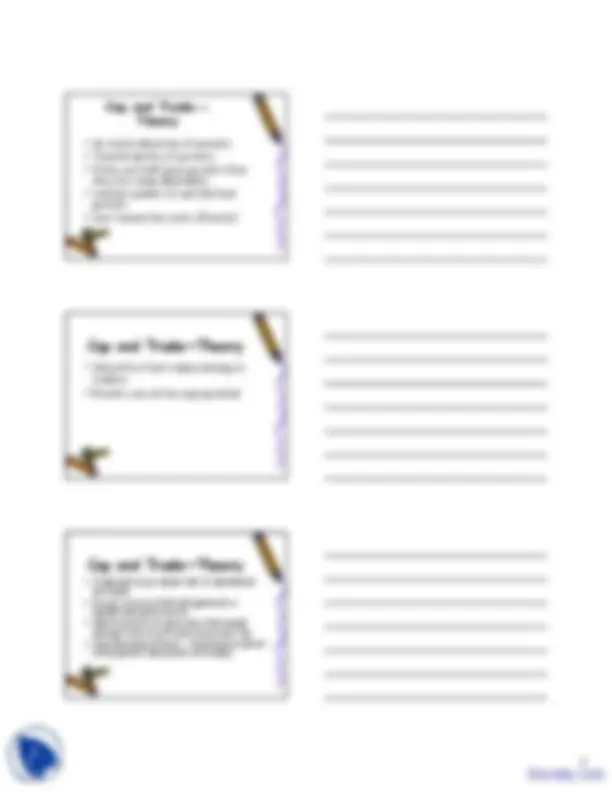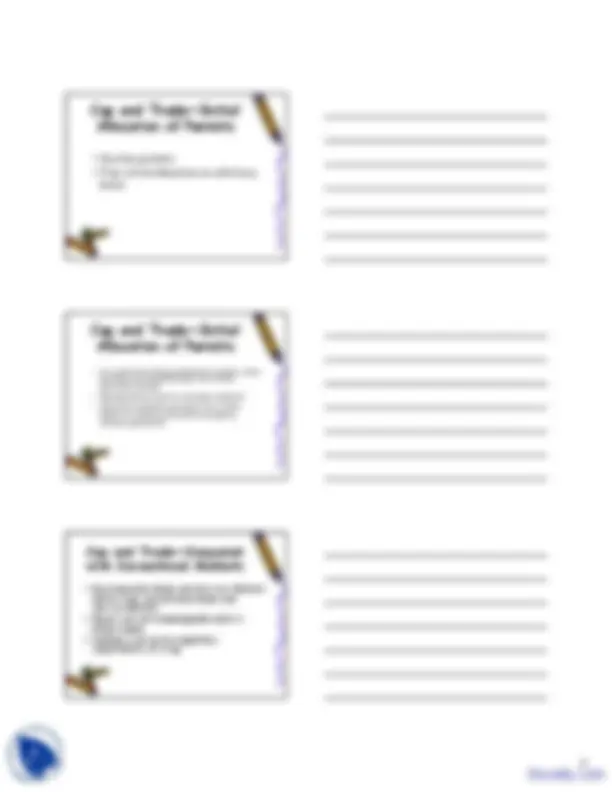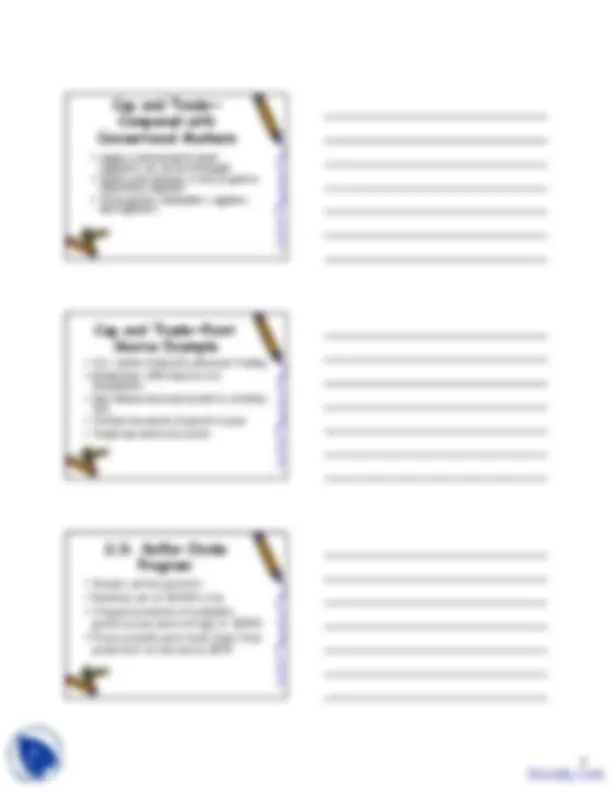





Study with the several resources on Docsity

Earn points by helping other students or get them with a premium plan


Prepare for your exams
Study with the several resources on Docsity

Earn points to download
Earn points by helping other students or get them with a premium plan
Community
Ask the community for help and clear up your study doubts
Discover the best universities in your country according to Docsity users
Free resources
Download our free guides on studying techniques, anxiety management strategies, and thesis advice from Docsity tutors
An in-depth analysis of cap and trade, an economic instrument used to control pollution through market-based mechanisms. The theory behind cap and trade is explained, including its creation of a market for the right to pollute, efficiency and effectiveness requirements, initial allocation of permits, and the role of auctions and free allocations. Real-world examples, such as the u.s. Sulfur oxide program, illustrate the practical applications and benefits of cap and trade, including cost savings, flexibility, and technological innovation.
Typology: Slides
1 / 7

This page cannot be seen from the preview
Don't miss anything!



